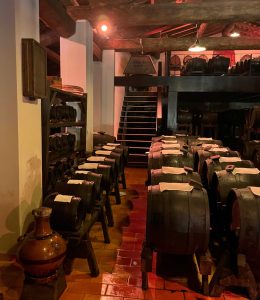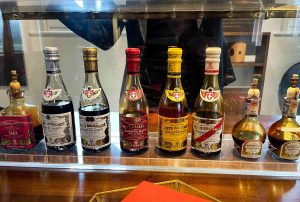Along a country lane, open to the endless expanses of Emilia‘s plains, you come to a small village, perfectly restored to resemble the farmhouses of the past.
These were the core of the region’s agricultural production, where the sense of community embraced all aspects of daily life.

Italy’s oldest vinegar was born here and is thanks to the Giusti family, the first vinegar producer in the entire peninsula, active since 1600, when the Duchy of Modena existed. The Emilian city was a fundamental strategic junction between northern Italy and the various regions south of the Apennines, a geographical position that contributed to the spread of balsamic vinegar as a product of absolute value.

In order to discover just how full of history this place is, the Giusti family has set up the Vinegar Museum, inside one of the farmhouses, which is a real gem.

Among the many interesting passages spanning four centuries of production, one lingers on when, at the time of Italian unification, the company bore the Savoy coat of arms precisely because it supplied the House of Savoy of King Victor Emmanuel II with its products.


The visit continues in the vinegar cellar, where we are shown five oak barrels next to each other, arranged in order from the largest to the smallest, the so-called ‘battery‘. This is where the ageing process takes place, which can last from 12 to 24 years and involves transferring the vinegar from the large barrel to the smaller one in succession.
The bung, the hole in the stave of the barrel, is kept ajar by a piece of cloth. This allows the cooked and fermented grape must to refine through contact with oxygen.

During the tasting, the vinegar is sampled on a teaspoon in order to fully appreciate each variety, from the youngest to the oldest. Each one has its own particularity and is characterised by a great refinement, which transports us to a centuries-old history.

The European Union has recognised the vinegar as worthy of legal protection by issuing the PGI mark, with the wording “Aceto Balsamico di Modena”. According to the regulations, the colour must be bright, the smell persistent with possible notes of wood, the taste sweet and sour and balanced: this is how a great pillar of Italian cuisine presents itself, perfect to be combined with meat, pasta, salads and desserts.

Come and discover Italy’s oldest vinegar in our shop!
